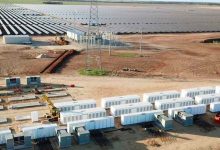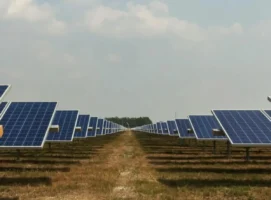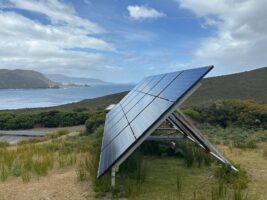The unsubsidised cost of wind and solar now beats coal as the cheapest form of bulk generation in all major economies except Japan, according to the latest levellised cost of electricity analysis by leading energy analyst BloombergNEF.
The latest report says the biggest news comes in the two fastest growing energy markets, China and India, where it notes that “not so long ago coal was king”. Not any more.
“In India, best-in-class solar and wind plants are now half the cost of new coal plants,” the report says, and this is despite the recent imposition of import tariffs on solar cells and modules.
The China experience is also significant. While local authorities have put a brake on local installations, causing the domestic market to slump by one third in 2018, this has created a “global wave of cheap equipment” that has more than compensated for increased financing costs caused by rising interest rates.
The cost of battery storage is also falling – so much so that in countries like Australia and India, pairing unsubsidised wind and solar with four hours of battery storage can be cost competitive with new coal or gas plants.
“Short-duration batteries are today the cheapest source of new fast-response and peaking capacity in all major economies except the US, where cheap gas gives peaker gas plants an edge. As electric vehicle manufacturing ramps-up, battery costs are set to drop another 66 per cent by 2030, according to our analysis,” the report says.
This is stunning stuff. BloombergNEF’s assessment of the ability of wind, solar and storage to beat new fossil fuel plants in Australia comes nearly a full decade before the prediction made by the Australian Energy Market Operator in its Integrated System Plan.
It would also suggest that the only hope that the current federal Coalition government has in trying to encourage new investment in coal is for upgrades and extensions of existing coal plant, which may become the limit of its rushed attempts to contract new “24/7” or “fair dinkum” generation.
(RenewEconomy sought more information about the estimated costs, but the report details have been reserved for clients).
BloombergNEF says the emergence of battery storage as a source of peak power and flexible capacity means that the costs of these services will fall to levels never reached before by conventional fossil-fuel peaking plants.
“Batteries co-located with PV or wind are becoming more common,” the report says.
“Our analysis suggests that new-build solar and wind paired with four-hour battery storage systems can already be cost competitive, without subsidy, as a source of dispatchable generation compared with new coal and new gas plants in Australia and India.
The Bloomberg analysis follows quickly on the heals of the recent annual Lazard uptake, and the voluminous World Energy Outlook from the more conservative International Energy Agency. All three come to the same conclusions: wind and solar and storage will beat out fossil fuels.
Globally, BloombergNEF says the benchmark global levellised cost of new PV (no-tracking) has fallen 13 per cent from the first half of the year to $US60/MWh, although the lowest costs occur in countries with excellent solar resources such as Australia.
This graph above shows the costs in China, where solar and wind have now begun to challenge coal, beat nuclear and also gas. If the combination of solar and battery appears to put it out of the market, this next graph may provide some context, as it shows the comparison between battery storage and the current choice of meeting peak demand, gas peakers.
It shows that for short one hour durations, battery storage is already easily the cheapest, and as battery costs continue to fall, even four hour battery storage will beat the current thermal options for meeting demand peaks and fast response.
BloombergNEF’s benchmark global levelized cost for onshore wind sits at $US52/MWh, a six per cent fall from its analysis six months ago, thanks to cheaper turbines and a stronger US dollar. The technology is now as cheap as $US27/MWh in India and Texas, without subsidy.
In the US, even with cheap shale gas, wind beats combined-cycle gas plants (CCGT) as a source of new bulk generation. And if the gas price rises above $US3/MMBtu, BloombergNEG suggest existing CCGT are going to run the risk of becoming rapidly undercut by new solar and wind.
“This means fewer run-hours and a stronger case for flexible technologies such as gas peaker plants and batteries that do well at lower utilization (capacity factor),” it says.
In the Asia-Pacific, gas is more expensive which means that new-build combined-cycle gas plants with a levelized cost of $US70-117/MWh continue to be less competitive than new coal-fired power at $US59-81/MWh. This remains a major hurdle for reducing the carbon intensity of electricity generation in this part of the world.
BlombergNEF’s LCOE analysis covers nearly 7,000 projects across 20 technologies and 46 countries globally.












